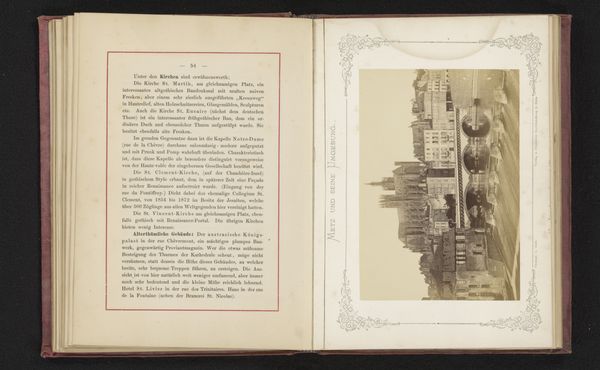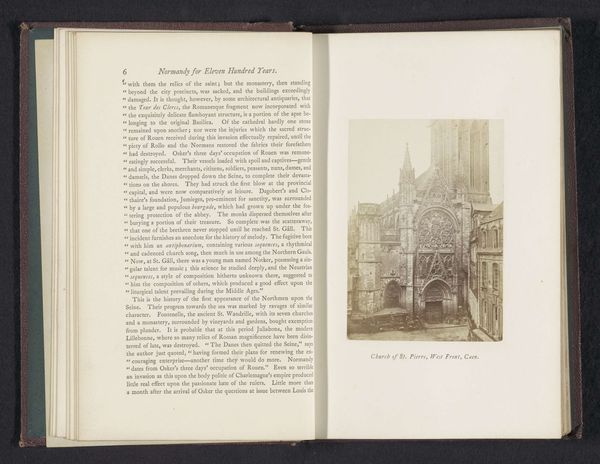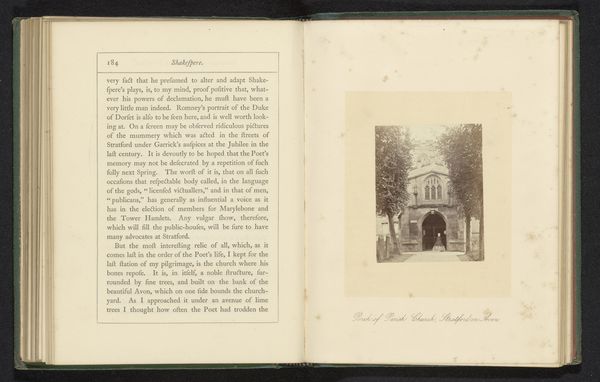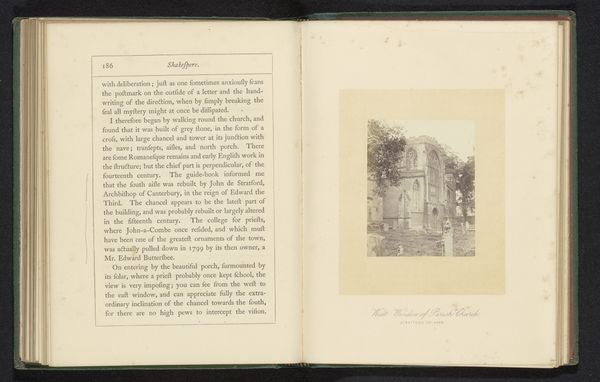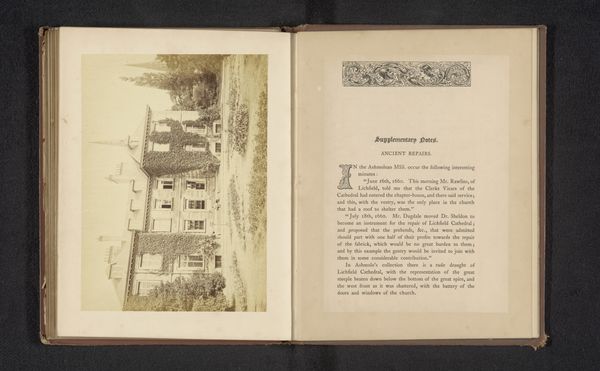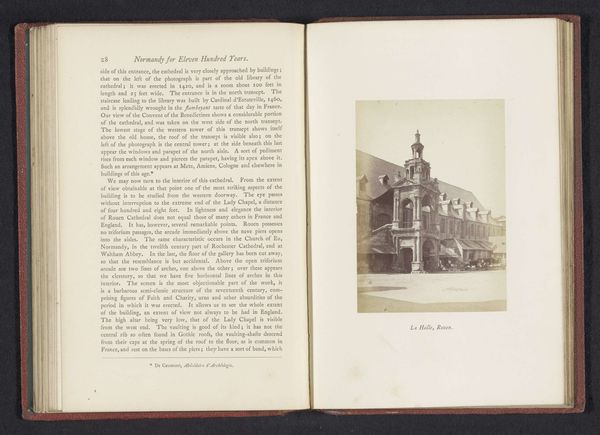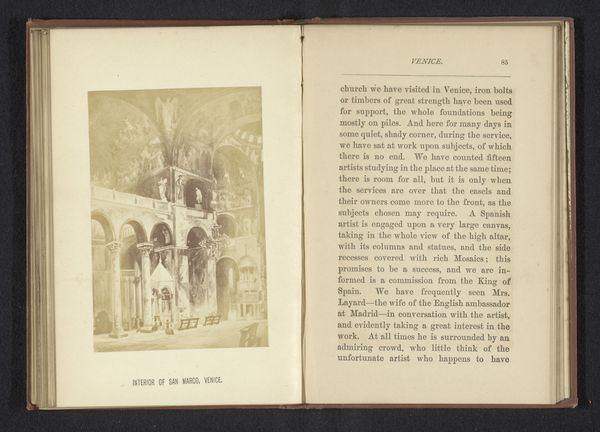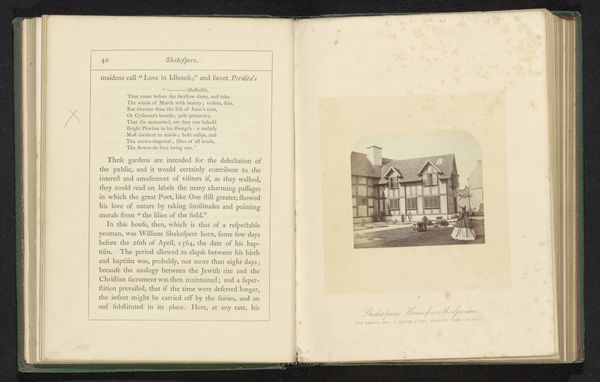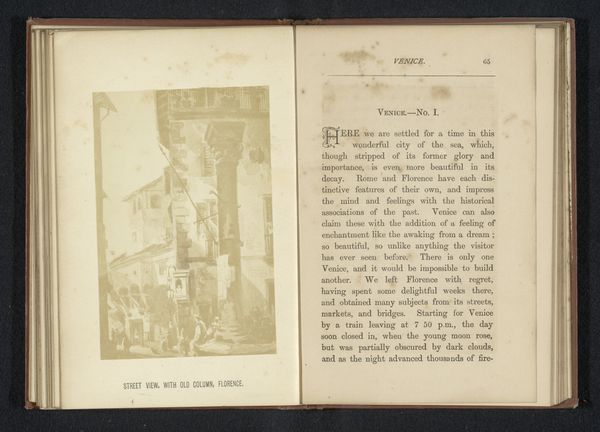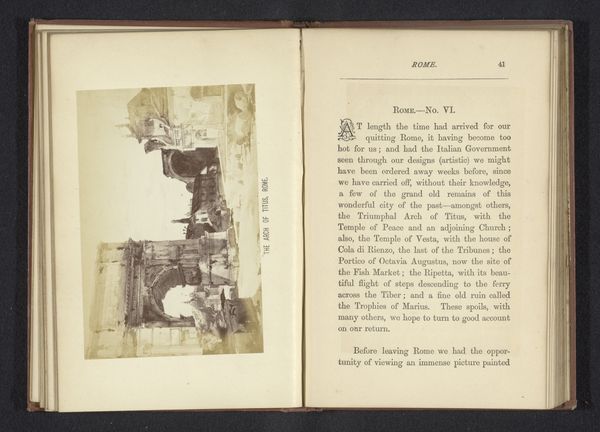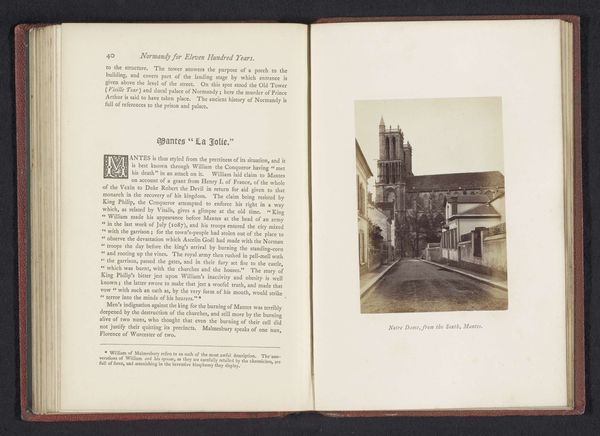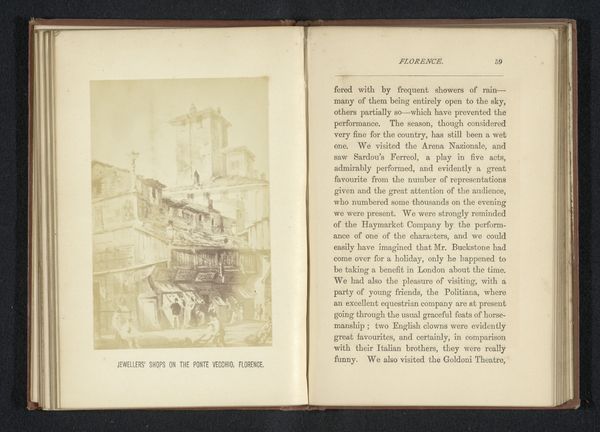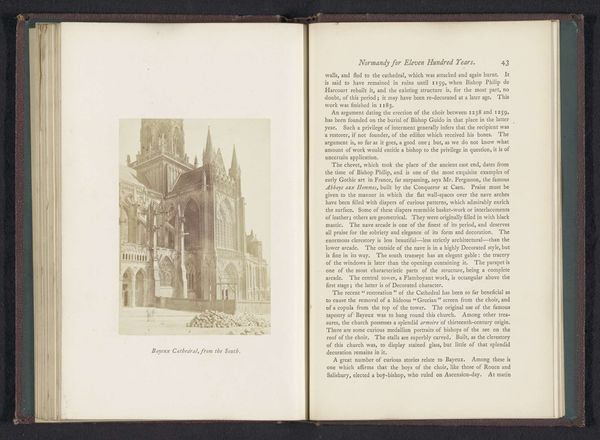
photography, gelatin-silver-print
#
landscape
#
photography
#
gelatin-silver-print
#
cityscape
#
italian-renaissance
#
watercolor
#
realism
#
building
Dimensions: height 123 mm, width 80 mm
Copyright: Rijks Museum: Open Domain
Curator: This gelatin silver print, taken before 1877, captures a Roman cityscape by J. Greer, titled “Old House in the Ghetto, Rome.” Editor: Ghetto…Rome. The light here—or the lack thereof—seems to paint everything with a bit of gloom. What survives isn't only brick and stone, but time itself… and hard times, surely. Curator: Precisely. Look closely at the architectural forms, the way Greer has utilized the tonal range of the gelatin silver process. The composition is a study in contrasts, juxtaposing shadow with fragmented areas of muted light. The emphasis seems to be on the structure’s geometrical planes—its cubic presence—as if echoing Renaissance formalism, perhaps? Editor: That’s academic! I reckon Greer wasn't concerned with echoing Renaissance anything, save maybe echoing its capacity for misery and light. Check out how these blocks lean, they fight gravity, even seem on the verge of collapse. Doesn’t the structure hint at a history of social injustice, marginalization? Curator: Certainly, the subject evokes social realities. The 'ghetto' itself speaks to a complex history, spatially and politically defining societal constraints. Editor: "Complex"…that’s one way to describe oppression. I’m caught between the physical decay and this photographer's impulse to—if only for a moment—memorialize a people… even in distress. Did he manage to portray these stones as a symbol of resistance, or a sign of abandonment? Maybe both… Curator: He might have meant to show the objective reality, capturing not just a structure but the material and social forces it embodies… an architectural embodiment, if you will. Editor: That, I can’t refute. This image echoes much of the story and feelings about urban plight in any time and location; that it survives still tucked away inside an old book is quite profound in its own way, dontcha think? Curator: Indeed, an astute remark. It bridges past and present concerns—art imitating life. Editor: Yep, stones may crumble, but feelings last… in art.
Comments
No comments
Be the first to comment and join the conversation on the ultimate creative platform.
